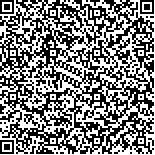下载中心
优秀审稿专家
优秀论文
相关链接
摘要

就机载激光雷达在"5·12"四川地震灾区快速获取数据的若干关键问题进行了探讨.介绍了机载激光雷达的一般技术以及数据处理基本流程,对影响数据获取和最后成果精度的几个普遍问题进行了讨论,根据这次四川灾区的实际情况,比较详细介绍了数据获取和处理的一些关键技术问题.这些问题的探讨,对于机载激光雷达在中国广大西南地区的推广应用以及激光雷达在应急响应中的应用,有较好的参考价值.
Based on the practical experienceswe learned from“5·12”Wenchuan Earthquake reliefworks, the paper discusses some key technical issues on data acquisition and post-processing arising from the airborneLIDAR system when it is applied to rapid response. After briefly introducing the basic principles ofLIDAR technology and its post-data processing work flow, severalkey technical issues concerning data acquisition and processing are expounded: (1) Ssystem calibration, which is actually mi portant to all scenarioswhen LIDAR system is to be used; (2) Flightplanning, the first and is also the key step as forhigh accuracy data acquisition. A good flightplan is ofgreat mi portance, especially when LIDAR system works in hilly areaswith high relie,f where weather condition is often complicated aswel;l (3) Ground GPS base station setting up. GPS base station, which isnecessary ifPOS system is adopted and high positioning accuracy isdemanded. Several requirements should be satisfied; (4) Conditions forobservation, including topographical condition,weather condition and forestry covering, allofwhich can influence the accuracy of the final results; (5) The choice of LIDAR hardware systems.Though several commercial LDIAR systems can be selected, we should bear in mind that each system has its pros and cons. Observation conditionshave to be taken into consideration, especiallywhen theLIDAR sys-tem is to be used over the hilly areas, such as in Sichuan Province; (6) The choice of laserpoweremission. As an active sensor system, LIDAR emits power by itsel.f However, there is a lmi itation as howmuch power is emitted. When lower power is emitted, itmay lack ofenergy thatsignals can notbe reflected by ground objects, so no echoes recorded. On the other hand, if raising power emission to a very high leve,l it isharmful to the hardware components of the system. So the optmi al choice is amust.Some achievements using the Leica ALS50 second generation LIDAR system are listed in the latter section, which show the airborne LIDAR technology is an efficientand practicalway to obtain high accuracyDEM data forSouth-western China. Some conclusions are summarized in the last section, including: (1) LIDAR system can acquire raw data under complex topographic and badweather conditions;(2)LIDAR technology is the bestchoice foraccurate DEM data acquisition in hilly areaswith high reliefand heavy forest; (3) data post-processing is tmi e efficientand shows its satisfaction for rapid response applications. Theworks described in the paper is helpful to smi ilar natural hazard reliefworks, and the technical issues discussed in the paper can be referenced by other smi ilar projects.

